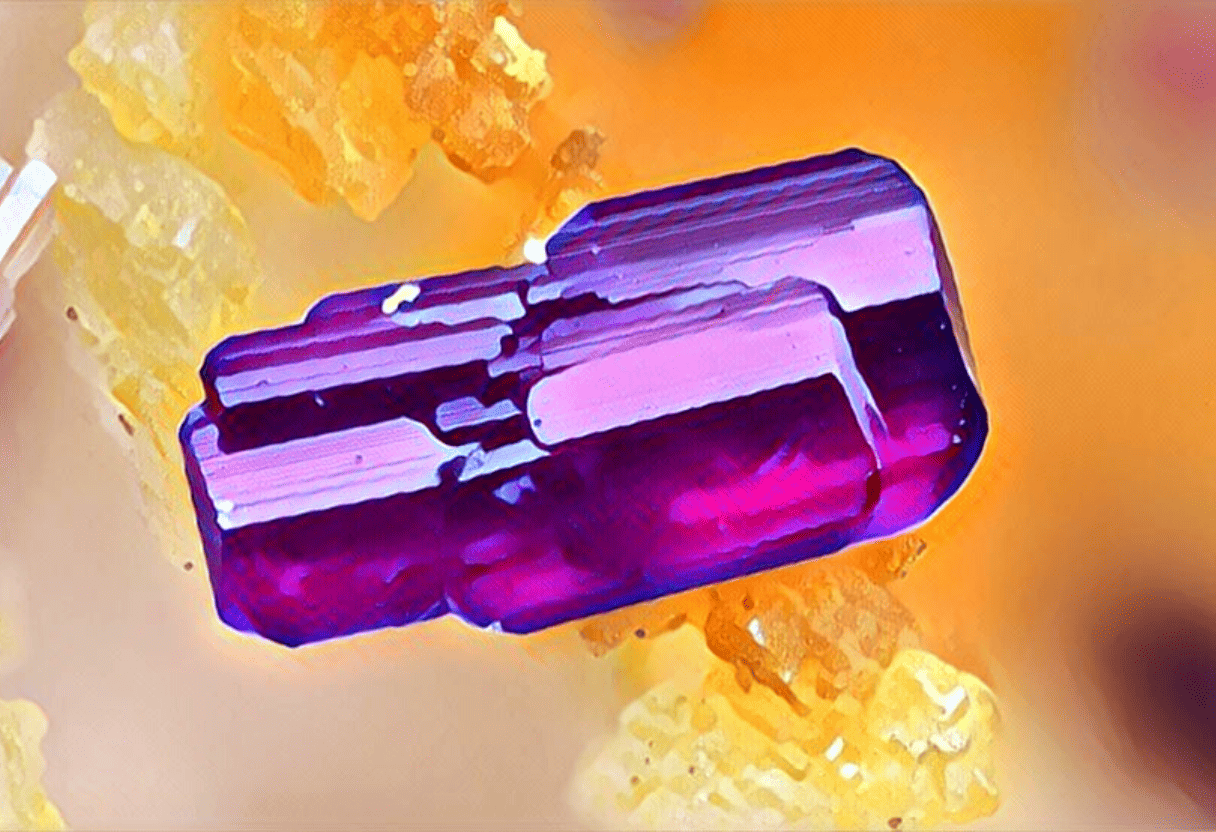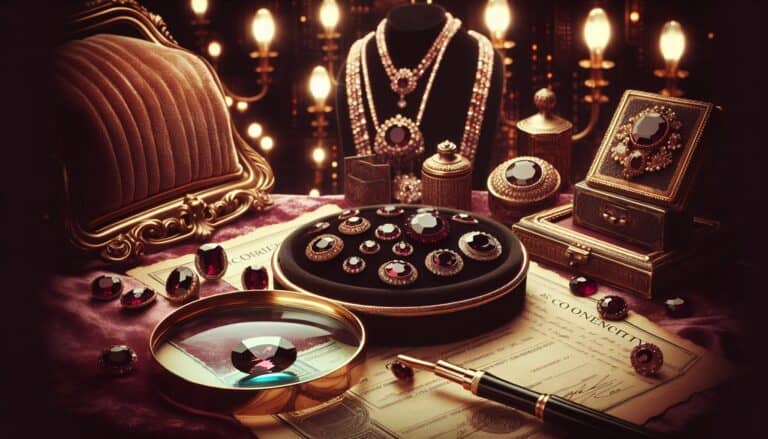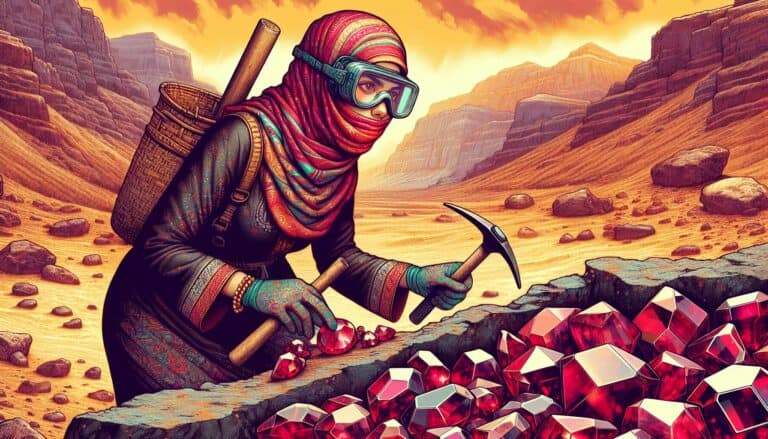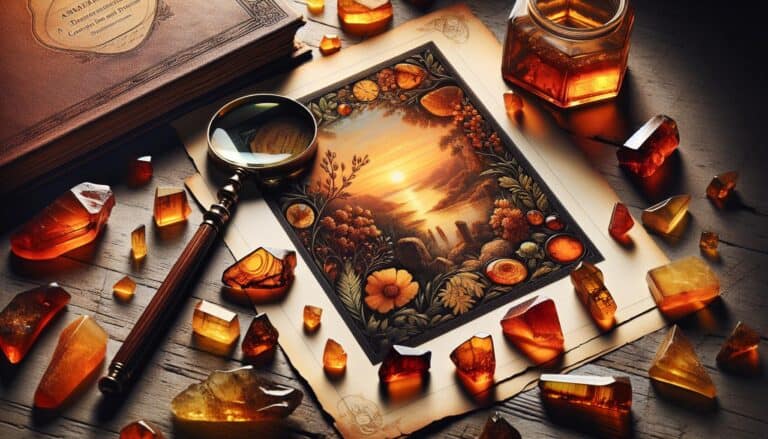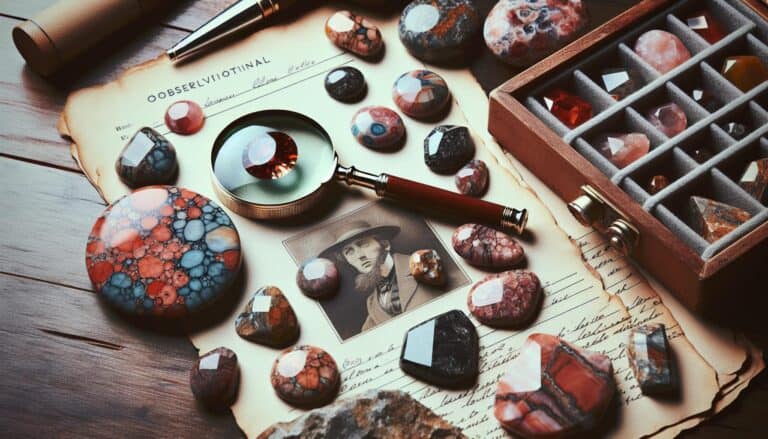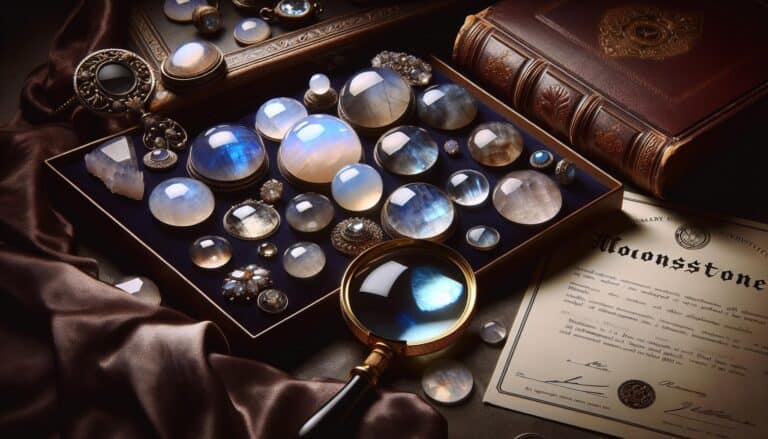Ever wondered about the value of that striking blue mineral called azurite?
You’re not alone. Azurite’s allure isn’t just in its deep, mesmerizing hue, but also in its potential worth. As a collector or enthusiast, understanding azurite’s value is key to making informed decisions.
The worth of azurite isn’t set in stone—it fluctuates based on several factors. From its size and quality to its origin, each piece tells a unique story. I’m here to guide you through what makes azurite a treasure in the mineral world and how these elements affect its market price.
Azurite’s value is determined by its color, clarity, size, origin, and rarity. The most prized azurite showcases a deep blue hue and high clarity. Larger, well-formed crystals from notable locations like Morocco and Arizona are more valuable. Market trends, historical significance, and treatments also influence its worth.
What Is Azurite
Azurite is more than just a pretty face in the world of minerals. It’s a carbonate mineral, often found in the company of malachite, its green carbonate cousin which shares a similar chemical composition. Azurite forms when copper-rich water interacts with limestone, creating the striking blue stone that collectors and jewelry enthusiasts covet. I’ve often marveled at the deep, vibrant azure hues it boasts, reminiscent of a clear sky just after a storm.
Historical Significance
Historically, azurite has been held in high regard for its color and pigment. Ancient civilizations such as the Egyptians used it to create vibrant blue paints, while the Renaissance masters reached for ground azurite to provide luscious blues in their oil paintings. This historical tie adds a layer of allure beyond its aesthetic, merging art, history, and geology.
Where Azurite Is Found
The value of azurite is intimately linked with its location. The most sought-after specimens typically come from locales known for their exceptional mineral quality, including:
- Morocco, known for its dazzling, deep blue azurite crystals
- Mexico, where azurite is often found cohabitating with malachite
- The United States, specifically in Arizona, a hot spot for collectors due to the variety and quality of specimens found there
These regions produce azurite with remarkable color saturation and crystal formations. It’s this visual spectacle that drives its demand in the minerals market.
Azurite in Modern Collections
In my experience, modern collectors prize azurite for its vivid color and its crystal habits. Specimens displaying a deep, lustrous blue or those that contain interesting crystal formations, like rosettes or stalactitic growths, are particularly desirable. The mineral’s place in contemporary collections is secure thanks to its dual role as both a collector’s gem and a historical artifact. Whether it’s set in a pendant or sitting on a shelf, azurite never fails to capture attention with its distinctive color.
Understanding Azurite Value
When considering the worth of azurite, I focus on a few critical factors that collectors and enthusiasts alike should take into account. The vividness of its color, the stone’s clarity, and the size and shape of the crystals are significant determinants of its value. Azurite’s deep blue hue, which can range from light to intense midnight blue, is primary among its valued characteristics. This is because the richness of the color often indicates the presence of a higher copper content, which in turn suggests a better quality specimen.
Another critical value determinant is the location where the azurite is mined. Azurite from certain locales, such as the famed mines in Chessy, France, can command a premium due to their historical significance and renowned quality. Provenance matters and plays a crucial role in a piece’s value on the market. Competitive collectors seek out the best examples from noteworthy localities.
The condition of the azurite specimen, such as whether it’s an isolated crystal or part of a clustered assembly, also heavily influences its price. Natural, unaltered pieces with sharp, well-formed crystals are more desirable and, thus, more valuable. In the mineral market, the finer the specimen, the higher the price it can fetch.
Moreover, unique or aesthetic crystal formations and the presence of accompanying minerals like malachite can enhance an azurite specimen’s allure, making it more appealing to buyers. Azurite’s association with malachite often results in beautiful specimens that display striking contrasts between the two minerals, very much sought after in the minerals-collecting community.
To give a sense of the value, here’s an example of how azurite specimens might be priced:
| Size | Quality | Price Range |
|---|---|---|
| Small | Average | $10 – $50 |
| Medium | Good | $50 – $200 |
| Large | Fine | $200 – $2000 |
The pricing reflects just how varied the market can be. Prices for high-quality specimens that exhibit exceptional color and crystal formation from historical mining localities can easily exceed these ranges. It’s crucial for buyers to research and compare specimens as the market can fluctuate, and rarity often dictates the final price tag. As with any collectible, condition is king; azurite specimens without damage or repairs will always lead the market.
Factors Influencing Azurite Worth
Color and Transparency
When I assess the value of azurite, the first thing on my checklist is the color and transparency. Deep, vibrant blue hues are most coveted and usually fetch higher prices. This intensity in coloration is due to the presence of copper in its chemical composition, and a richer color signifies a more desirable specimen. It’s also essential to consider the transparency of the stone. Though azurite is typically opaque, specimens that show even the slightest translucence can be considered more unique, and therefore can demand a premium.
Size and Carat Weight
The next factor that plays a significant role in determining azurite’s worth is its size and carat weight. Large, well-formed crystals are rare and can be quite valuable. To give you an idea, here’s a quick rundown of typical azurite sizes and their corresponding carat weight ranges:
| Size Range (mm) | Carat Weight Range |
|---|---|
| Small (1-5 mm) | 0.05-0.5 carats |
| Medium (6-10 mm) | 0.6-2.5 carats |
| Large (11+ mm) | 3+ carats |
Keep in mind, the value doesn’t increase linearly with size due to the rarity of larger crystals. So, a specimen that significantly exceeds the average size can be exponentially more expensive.
Clarity and Luster
Lastly, clarity and luster are paramount in determining the market value of azurite. Clarity refers to the presence or absence of inclusions within the mineral. While it’s nearly impossible to find azurite with the clarity of a diamond, those with fewer noticeable inclusions are more sought after. The luster of azurite reveals itself through its surface sheen, and a notable, glassy luster can significantly elevate a specimen’s appeal. Any factors that reflect the quality of light off the mineral will undoubtedly influence its price tag.
As we continue to scrutinize what determines azurite’s worth, it’s evident that much like any gemstone or mineral, several finely tuned factors contribute to its valuation. Each azurite piece is unique, and thus its worth is evaluated on a case-by-case basis with a close eye on these characteristics.
Azurite Rarity and Origins
As I delve into the aspects that affect azurite’s value, it’s imperative to consider its rarity and where it comes from. The allure of azurite isn’t just in its stunning blue coloration or its captivating luster; its scarcity and the geographical locations from where it’s mined contribute significantly to its overall worth.
Geographical Sources of Azurite
Azurite can be found across different parts of the globe, but there are specific regions known for yielding particularly noteworthy specimens. Historically, France, Germany, Namibia, and the United States have been prolific producers of azurite. In the US, the state of Arizona, particularly the Bisbee mines, is renowned for high-quality azurite crystals that mesmerize collectors and gem enthusiasts alike. These regional sources are crucial because they often determine the availability and, subsequently, the market value of azurite.
In addition to these historical sites, azurite deposits have been discovered in Australia, China, Morocco, and parts of Russia, contributing to the global diversity of azurite specimens. Each mining location imparts distinct characteristics to the azurite, such as variations in color intensity, matrix interactions, and crystal formations, which in turn affect both aesthetic appeal and value.
The Rarity of Quality Specimens
Finding azurite isn’t as straightforward as locating more common minerals. The rarity of quality azurite specimens is a significant factor driving up their desirability and value. High-quality azurite is characterized by its deep blue color and a high degree of crystallization. However, most azurite finds don’t meet the top gem-grade criteria and therefore don’t command premium prices.
The best specimens are those that feature not only an exceptional blue hue but also clarity and a noteworthy crystal habit. These top-tier azurite pieces are a rarity, often emerging from specific mining areas known for their unique mineral composition that favors the formation of such prized specimens. Collectors and connoisseurs are typically willing to pay a premium for these few exceptional pieces that stand out due to their unique qualities and the relative scarcity of comparable examples.
Crystal size is another determining factor in the rarity equation of azurite. Larger crystals with well-defined edges and smooth surfaces are not only less common but also more challenging to extract without damage, making them rarities that are especially valued in the collector’s market.
The difficulty in mining azurite also plays a role in its scarcity. Azurite formations are often found deep within copper ore deposits, requiring careful and precise extraction methods to ensure the crystals aren’t destroyed during the process. This labor-intensive retrieval often justifies the higher cost associated with larger or more aesthetically appealing azurite specimens.
Pricing Trends for Azurite
Market Demand for Azurite
The fascination with azurite’s intense blue hue feeds its consistent market demand. Particularly popular among gemstone collectors, azurite is often sought after not just for its beauty but also for its metaphysical properties. It’s believed to enhance creativity and provide insight, which makes it a hit with a niche market that values these attributes.
Azurite enthusiasts are willing to pay a premium for pieces with distinctive features such as pronounced azur-malachite zoning, a natural occurrence where azurite and malachite form together. As interior design trends evolve, large azurite specimens are becoming increasingly admired as statement decor, further boosting demand. What does this mean for pricing trends? Generally, prices have been rising steadily as high-quality specimens become harder to source.
Comparative Values with Other Gemstones
When examining azurite’s value next to other gemstones, it’s a unique market player. Unlike diamonds or sapphires which have a standardized grading system, azurite’s value is more subjective, hinging on color intensity, form, and provenance. Lapis lazuli, another blue gemstone, often serves as a comparative benchmark. While high-quality lapis can be pricey, top-tier azurite specimens with deep, lustrous blue coloration are often more valuable due to their rarity.
It’s interesting to note that azurite doesn’t command prices as steep as those of fine sapphires. Yet, for some collectors, the natural allure and less commercialized nature of azurite is its true charm. Supply and demand dynamics play out differently for azurite than for more mainstream gemstones, which only adds to its allure and the complexities of its valuation.
The Most Expensive Azurite
In diving deep into the azure world of this vivid mineral, I’ve discovered that the most exquisite azurite specimens can fetch breathtaking prices. When considering high-value azurites, provenance plays a crucial role. For example, azurite from the legendary Bisbee mine in Arizona, known for producing some of the finest specimens, can command top dollar. Collectors and connoisseurs are enamored by pieces from famous localities.
At auctions, exceptional azurite specimens have been known to reach astounding prices, occasionally selling for thousands of dollars. The specific features that elevate the cost of azurite pieces include:
- Size: Larger pieces with substantial weight.
- Clarity: Specimens with fewer impurities and blemishes.
- Form: Well-formed crystals with notable azurite “roses” or aggregates.
- Color: A deep, electric blue hue with a rich saturation.
One of the most expensive azurites ever sold was a standout specimen from the historic Morenci mine in Arizona. It boasted an unparalleled deep-blue color with a glistening sheen that captures the light, accentuating the crystalline structure of the mineral. The rarity of such quality accounts for its high price tag.
Notably, the value of azurite is not solely based on its physical attributes. The specimen’s historical significance and the narrative attached to it frequently enhance its worth. Collectors are often willing to invest more in azurites that hold a story or hail from renowned mines that are no longer operational.
Tracking the sales of top-tier azurite specimens is an insightful window into the gemstone market’s dynamics. Market trends show that prices have steadily risen due to increased collector interest and the dwindling availability of fine specimens. This upward trajectory seems to reflect a growing appreciation for azurite’s unique beauty and the desire to own a piece of natural history.
How to Appraise Azurite
Expert Evaluation Techniques
When assessing azurite’s value, expert gemologists use a comprehensive set of techniques. First and foremost, visual inspection plays a pivotal role. Azurite’s unique lapis blue hue gets scrutinized for its richness and depth. For an accurate assessment, I examine the specimen under varied lighting conditions to ensure the color consistently exhibits brilliance.
Another critical factor in appraising azurite is determining its purity and clarity. While inclusions are common, those that detract from the stone’s aesthetic may lessen its value, whereas intriguing natural patterns can enhance it. I utilize a jeweler’s loupe or a microscope for a thorough inspection, searching for any features that may impact the overall appeal and hence the value.
In terms of its physical properties, hardness is evaluated using the Mohs scale where azurite stands at a relatively soft 3.5 to 4, indicating a susceptibility to scratching. Weight and dimensions are also recorded, especially since larger sizes tend to be rarer and thus more valuable. Photography is an essential tool in documenting these characteristics and provides a visual reference that can be used for further analysis or certification purposes.
It’s important to note that historical provenance significantly influences azurite’s value. Documentation corroborating the specimen’s origin, especially if it’s linked to notable mines or regions like the Bisbee mine in Arizona, can elevate the value tremendously. Experts with knowledge of geological occurrences aid in confirming the provenance.
Certification and Appraisal Resources
For those looking to get their azurite officially appraised, a range of resources are available. Certification bodies such as the Gemological Institute of America (GIA) offer reports that authenticate and describe the quality of the mineral specimen. These comprehensive documents detail the gemstone’s characteristics and provide an authoritative source for third parties. I often recommend securing such certification, as it increases the credibility and resale potential of the azurite.
Appraisals can be conducted by certified gemologists who provide a value estimation based on current market conditions and the distinct qualities of the gemstone. When searching for a reputable appraiser, it’s essential to look for professionals affiliated with recognized organizations, such as the American Society of Appraisers or the International Society of Appraisers.
For a more informal evaluation, local jewelers with experience in precious stones might offer insights, although for investment-grade minerals, I advise consulting with a specialist. Additionally, there are online resources and forums where enthusiasts and experts discuss and share information on azurite, which can be a great starting point for understanding the factors affecting its market value.
Tips for Buying and Selling Azurite
When it comes to acquiring or letting go of a gemstone as unique as azurite, knowing the ins and outs of the transaction process is vital. Here are a few insider tips to help navigate the marketplace.
Where to Buy Azurite
Finding quality azurite requires looking in the right places. I’d recommend starting with reputable gemstone dealers and specialized mineral shows, which are both fantastic sources. These vendors often have a deep understanding of azurite’s value and can provide valuable insights into a specimen’s origins and quality. Online marketplaces are also popular, but it’s crucial to verify the credibility of sellers to avoid fakes. Check for sellers with high ratings, good reviews, and a clear return policy.
Buying directly from mines or regions known for azurite production can offer a chance to get high-quality stones at better prices, as the middle-man is effectively cut out. However, always do due diligence when it comes to authenticity and legality. Besides, it’s a good practice to ask for a certificate of authenticity when making a purchase, especially for higher-valued specimens.
How to Sell Azurite Safely
Selling azurite calls for caution and strategic planning. If I’m looking to sell an azurite piece, my first step is typically to get it appraised by a certified gemologist. This not only assures potential buyers of the stone’s value but also gives me a clear idea of its worth in the current market.
For high-value azurite, auction houses can be a suitable avenue as they attract serious collectors willing to pay a premium. Consignment with a trusted gemstone dealer could work too, thanks to their established clientele. If I’m opting to sell online, I’ll use platforms with a track record of secure transactions and safeguards against fraud.
To protect my interests, I always make it a point to document the piece’s condition with high-quality photographs and descriptions, offer secure shipping options, and use payment methods with buyer and seller protection policies.
Remember, whether you’re buying or selling azurite, knowledge is power. Keep up to date with market trends, understand the legalities involving mineral trade, and always transact with transparency and authenticity. This way, the value of your azurite will be truly realized, and your experience will be as brilliant as the stone itself.
Conclusion: Buying & Selling Azurite
Azurite’s worth is a complex tapestry woven from its color, clarity, form, and narrative. As a gemstone enthusiast, I’ve seen how these factors can make the difference between an ordinary piece and one that’s truly extraordinary.
If you’re looking to sell, remember that a story can significantly enhance your azurite’s appeal. The market is keen on pieces with a rich history or those from famed localities like the Bisbee mine.
My advice is to stay current with market trends and legal considerations to ensure you’re making informed decisions. Always prioritize secure transactions and authenticity to protect your investment.
Whether you’re buying or selling, azurite offers a unique opportunity to own a piece of Earth’s beauty, and understanding its value is key to a successful exchange.

